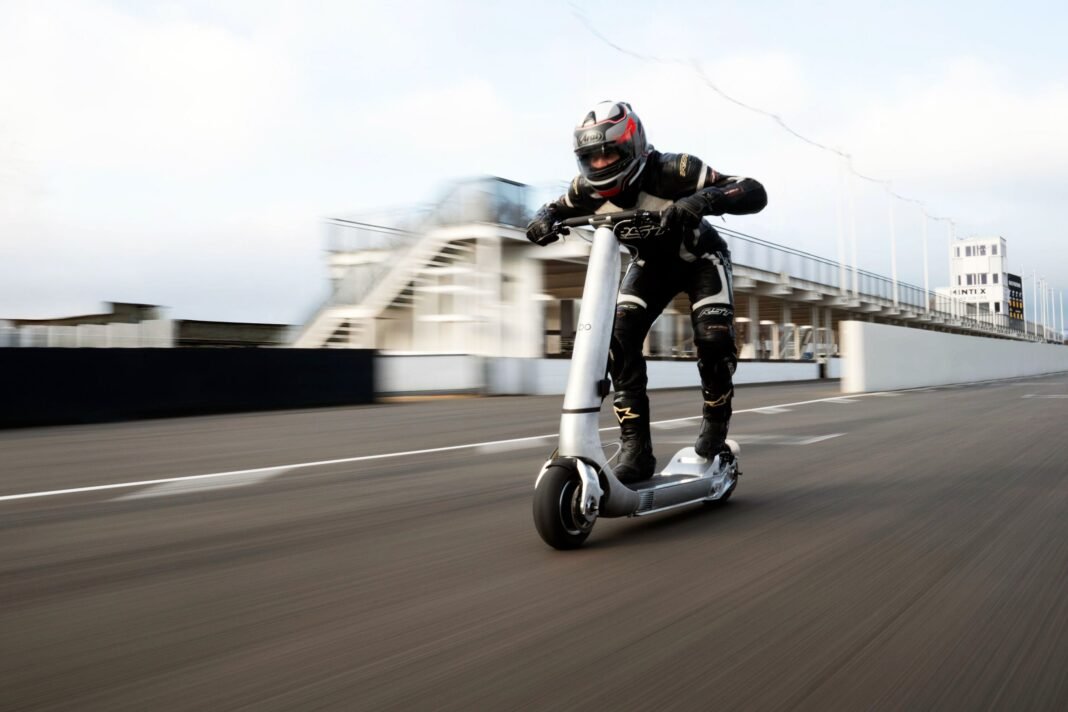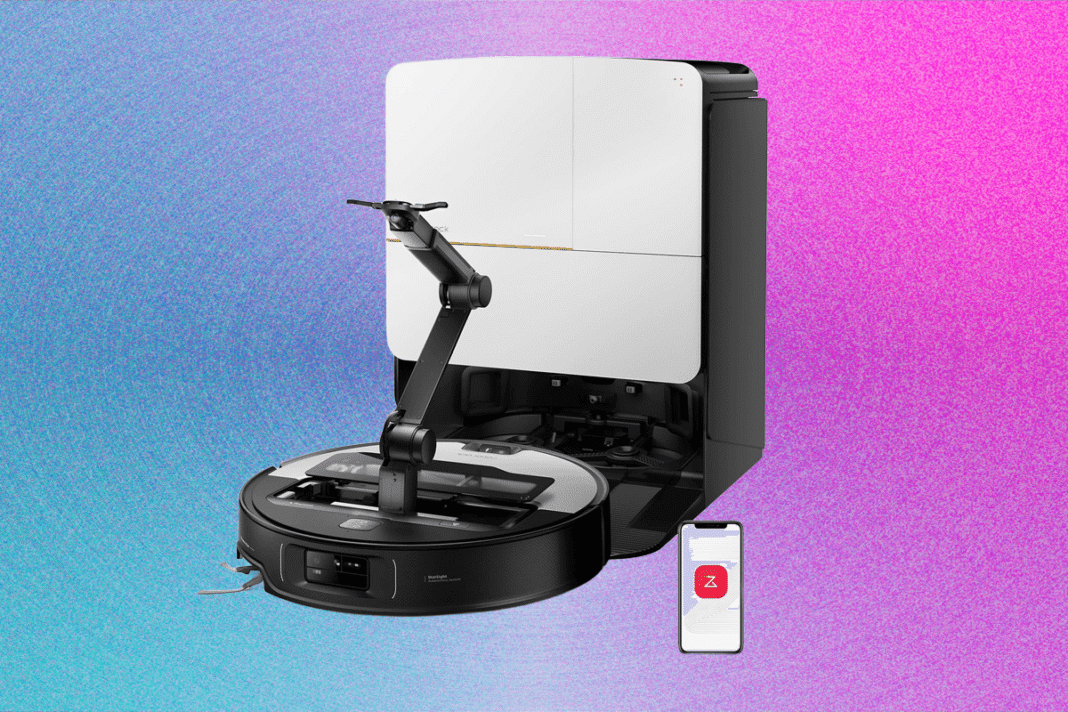Transforming Urban Travel: The Emergence of Bo’s High-Performance Electric Scooters
Breaking Speed Barriers and Redefining Design
Experiencing the thrill of an electric scooter reaching speeds close to 40 miles per hour is rare and exhilarating. UK-based innovator Bo is setting its sights even higher, aiming to surpass 100 miles per hour with their upcoming model, aspiring to secure a Guinness World Record for speed in micromobility.
Though relatively new in the electric scooter arena, Bo’s team boasts expertise from Williams Formula One advanced Engineering. Their flagship product, the meticulously crafted Bo M, debuted about a year and a half ago across europe and the UK. now preparing for its US launch, this sleek aluminum unibody scooter is joined by an ambitious high-speed prototype named Turbo designed to captivate speed enthusiasts.
The Unique Build of the Bo M Scooter
The Bo M distinguishes itself through a robust unibody aluminum frame that does not fold-a deliberate choice prioritizing strength over portability. Delivered in an L-shaped box to preserve its structural integrity during shipping, this design avoids common folding mechanism weaknesses that have led major brands like Segway into costly recalls.
This sturdy construction comes backed by confidence: a seven-year warranty covers the chassis while other components receive two years of coverage.Although it sacrifices some convenience without folding capabilities, features such as a distinctive centre stand prevent tipping when parked-an uncommon trait among scooters-and its IP66 rating ensures resistance against dust and heavy rain for reliable outdoor storage.
Balancing Power with Everyday Usability
Weighing approximately 50 pounds, the minimalist-looking Bo M houses a potent 400-watt motor capable of speeds up to 22 mph with an estimated range near 30 miles on one charge. It comfortably supports riders weighing up to around 265 pounds. Test rides on urban streets in San Francisco revealed smooth acceleration complemented by pneumatic tires that absorb most road vibrations except on uneven surfaces like cracked asphalt.
The scooter’s firm yet agile handling benefits from proprietary safesteer technology which automatically recenters handlebars-reducing rider fatigue by eliminating constant grip tension during longer trips. Braking combines regenerative braking via the left lever with mechanical drum brakes on the right; however, some users may desire enhanced stopping power under more demanding conditions such as steep descents or wet roads.
User-Centric Features and Customization Options
The handlebar height remains fixed due to design priorities focused on maintaining aesthetic appeal-a potential challenge for taller riders exceeding six feet four inches-but future iterations may introduce adjustable sizes or additional features like folding mechanisms or extended battery options tailored for diverse user needs.
Standard equipment includes front and rear LED lights plus an integrated bell alongside dual speed modes accessible through button controls. Instead of embedding displays directly onto the frame, riders mount smartphones using Mous IntraLock mounts-another British innovation-to access real-time speedometers or navigation apps seamlessly via dedicated software interfaces optimized for safety and convenience.
Simplified Connectivity With Expansion Potential
The companion app offers essential functions including motor locking/unlocking, mode switching between eco and sport settings, headlight control, and battery status monitoring but currently lacks advanced GPS tracking pending certification required by platforms such as Apple Find My network integration expected later this year.
A multifunctional Lock & Load mounting point doubles as both security anchor compatible with various bike locks and convenient backpack hanger during rides-demonstrating thoughtful attention toward practical daily usability beyond raw performance metrics alone.
Pricing Structure And After-Sales Support Outlook
This premium-quality build commands a price reflecting its craftsmanship: £1,299 in Britain equates roughly to $2,250 after tariffs when sold stateside-considerably higher than many competitors offering similar specifications at nearly half that cost (such as models priced around $1K). Still customers valuing both style and substance find worthwhile value here as setup out-of-the-box requires minimal assembly aside from inflating tires before first use.
A critical consideration facing emerging micromobility brands involves maintenance support post-purchase. Currently exploring partnerships with dealer networks while providing online parts sales enables DIY repairs where feasible-even though some components remain proprietary-the modular design allows third-party replacements ensuring longevity beyond factory defaults (e.g., standardized motor mounts permit swapping motors if desired).
Pushing Boundaries With The Turbo Model
The Turbo represents an audacious leap forward: targeting speeds exceeding 100 mph makes typical urban cruising seem effortless by comparison. Built upon an enlarged version of Bo M’s signature aluminum monocoque chassis but equipped with dual motors delivering nearly 24 kilowatts combined output powered via massive lithium-ion batteries totaling approximately 1.8 kWh capacity-theoretically enabling ranges up to 150 miles when ridden conservatively at city pace (~18 mph).
“Incorporating F1-inspired ram-air intakes modeled after brake duct systems used in Formula One cars highlights how racing technology informs practical engineering solutions aimed at preventing overheating during extreme runs.”
An Exclusive Innovation With Real-World Appeal
This high-performance machine transcends concept status; early adopters already exist-as an example one enthusiast based in Germany reportedly placed an order valued near $30,000 USD reflecting niche appeal among aficionados willing to invest heavily for cutting-edge innovation paired with exclusivity within micromobility markets worldwide.
A Forward Look Into Micromobility’s Evolving Landscape
- cyclotech: A Berlin-based startup recently launched AeroBike-a lightweight carbon fiber e-bike combining pedal assist functionality priced around €4,200 targeting eco-conscious urban commuters seeking durability fused with modern aesthetics;
- E-Motion: An emerging player introduced VoltScoot earlier this year focusing on rugged electric scooters emphasizing all-terrain capability alongside sleek designs;
Together these ventures underscore growing consumer demand not only for functional personal mobility devices but also those boasting refined craftsmanship supported by robust engineering principles-even if accompanied by premium pricing compared against mass-market alternatives available globally today.
Navigating Tomorrow’s Urban Mobility Challenges Through Innovation Today
Complex designs pioneered by companies like Bo demonstrate how integrating advanced materials science inspired directly from motorsport heritage can elevate everyday commuting experiences while pushing technological boundaries further than ever before-heralding exciting possibilities within lasting urban transportation ecosystems worldwide.





